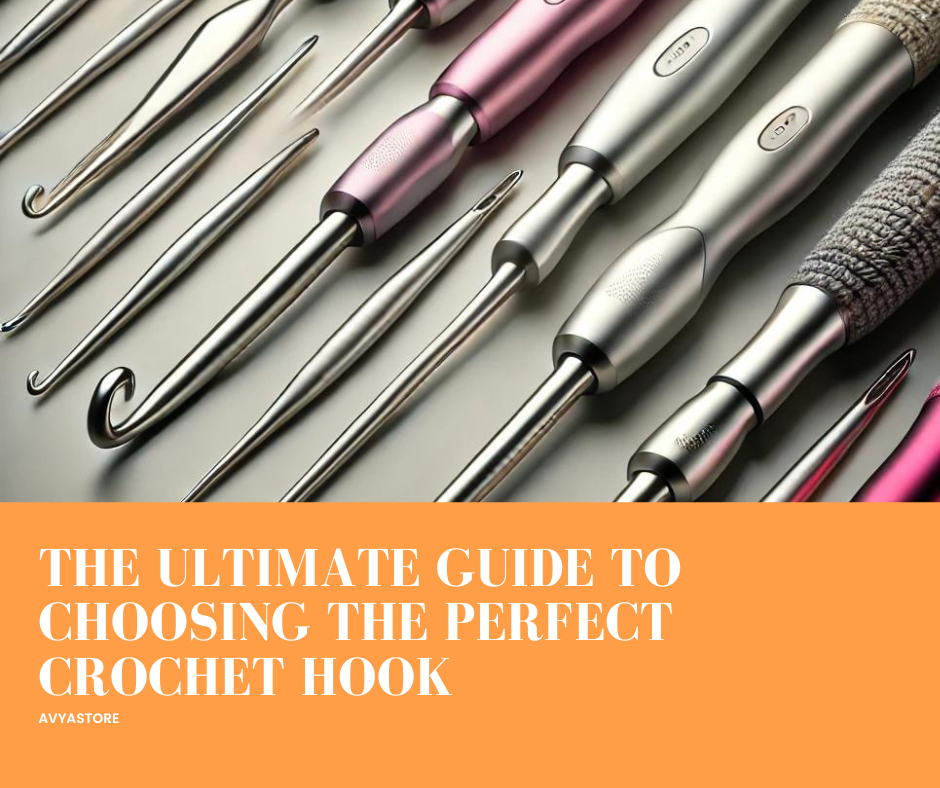
Introduction:
For the almighty act of crocheting, it is glaringly incomplete without the crochet hook. Being either a novice or a seasoned expert crocheter, there would always be a difference in choosing the best crochet hook that would make much easier and better an experience in doing the craft, not to mention technique, and even avoid hand fatigue. It is quite bewildering, with all the various materials, designs, and brands. In this step-by-step guide, we will discuss the history, materials, sizes, and types of crochet hooks, as well as provide an in-depth comparison of popular brands: Clover, Furls, and Susan Bates. Whichever the reason is-speed, comfort, or sustainability of being good for the next project-to know which one is used whether better than others can really make you know.
History of Crochet Hooks
It is not clearly known how crochet was invented, but some considered it evolved from the embroidery that some people practiced as a hobby back in the 16th century, known as tambour. Early crochet hooks were made from wood, bone, ivory, and metal. They were handmade and mostly simple in designs. At present, the crochet hooks have gained a new height of popularity in Europe after the 19th century with particularly Victorian. The steel hook came as an accessory to crochet during this period. It grew to be an art of making lace and other designs.
Sizes of Crochet Hooks:
The differences in sizes reflect the different sizes of crochet hooks that are available. The size of the stitch will depend on what size of the hook is used, given that most crochet hook sizes are measured in millimeters, although the sizing systems used by different countries differ.
• U.S. Sizing: Letters and numbers from B-1 to Q-19
• Metric Sizing: Measured in millimetres from 2mm to 20mm or even larger
• UK Sizing: Numbers that start as small as 14 to go as large as 000.
The size of the hook: Depending on the thickness of the yarn or thread and the tightness of the stitches, the size of the hook varies. With fine threads, such as lace, small hooks are used, and with thicker yarn, hooks are larger.
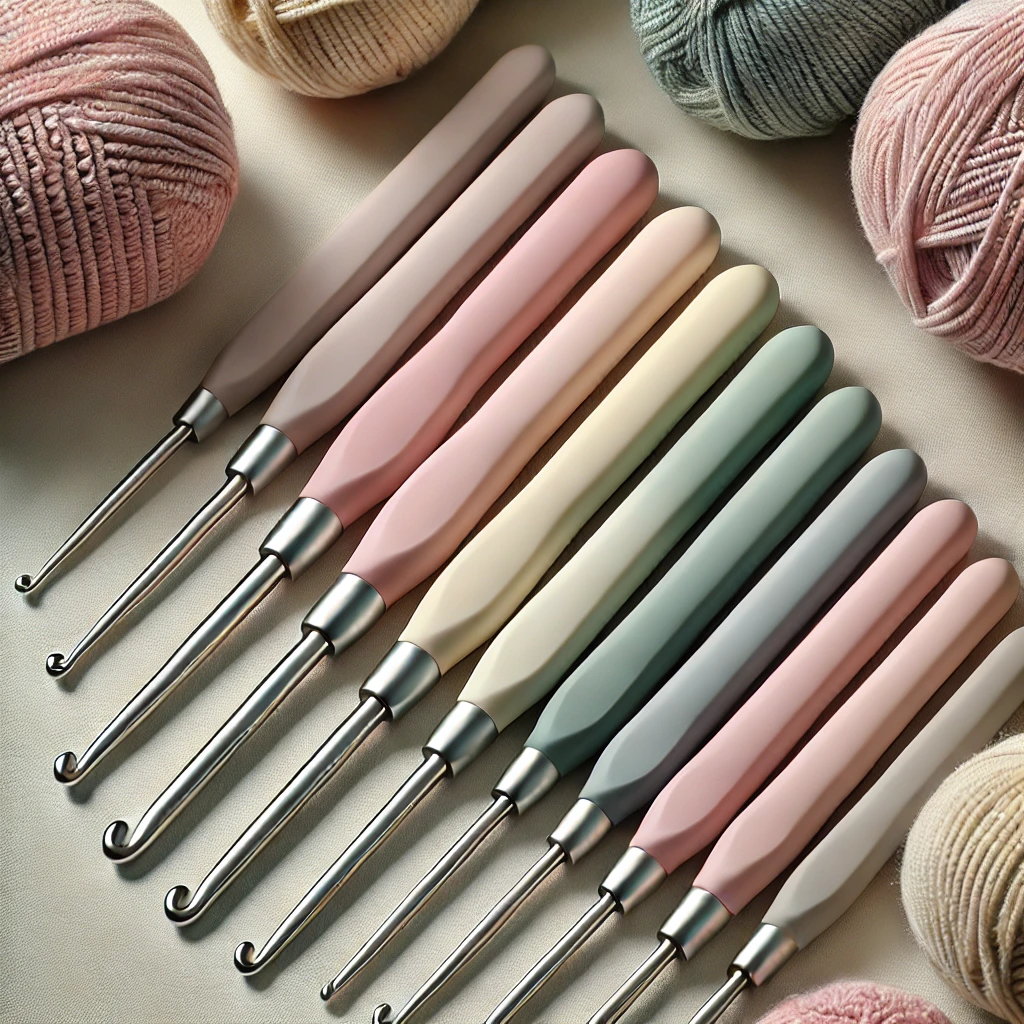
Quality of Crochet Hooks
The quality of crochet hooks relies on the material, ergonomic design, and the craftsmanship:
Materials:
- Aluminum & Steel: Strong and sturdy, smooth to work with especially for smaller, intricate work like lace or doilies.Plastic: Very lightweight and inexpensive but not as sturdy; they tend to make great larger-size hooks.Wood (Bamboo, Birch, etc.): Warm to the touch, lightweight, and also environmental-friendly. These hooks often give a little bit of grip to the yarn, so users can create easily if they prefer more control
- Ergonomic Hooks: They have cushioned, padded grips that are designed to be comfortable for long periods of time with reduced hand stress.
- Comfort: Good crochet hooks are made ergonomically to allow a crocheter to crochet for long hours without discomfort. Brands like Clover and Furls make good quality ergonomic hooks.
Variants of Crochet Hooks:
•Steel Hooks: These are widely used in fine thread work such as lace or delicate motifs.
•Plastic Hooks: Suitable for larger projects and thicker yarn; lightweight and most often used when working with bulky or super bulky yarn
•Ergonomic Hooks: Ideal for marathon projects and for those with arthritis or carpal tunnel syndrome as they offer better comfort
•Specialty Hooks (Tunisian or Double-Ended Hooks): To accommodate techniques such as Tunisian crochet or reversible stitches.
Emerging Trends in Crochet Hooks
1. Eco-friendly Material: Bamboo or recycled plastic are two materials which are gaining popularity in usage. It also comes with a growing demand for the normal handcrafted and artisan-made hooks in markets, made from sustainable woods or any form of organic sources.
2. Handmade Hooks: With increasing individuality penchant among the crocheters, a great amount of them switch to handmade hooks, such as resin or rare woods, which then turn out to be unique in design or even personalized in certain ways.
3. Ergonomic Inventions: Brands enhanced the ergonomic design of the hooks to cut down hand strain. Adjustable and customized handles are new trends that facilitate a comfortable grip for the crocheter.
4. Digital Integration: Although this isn’t aligned directly with the hooks themselves, the interest in combining traditional crafts, such as crochet, with modern technology, for example, through the production of customized hooks or accessories using 3D printing, is picking up pace.
5.Aesthetic Hooks: The hook designs are aesthetic, and some come with intricate details, vibrant colors, or textures. These are ideal for crocheters who believe that aesthetics counts equally to functionality.
How to Care for Your Crochet Hooks
How you properly take care of your crochet hooks can ensure long service and efficient use. Materials that make up the hooks dictate how they should be cared for.
1. Material-Specific Care:
Steel/Aluminum Hooks:
- These are quite strong and require very little maintenance but will rust overtime when exposed to moisture.
- Care Tip: Wipe them clean with a dry or slightly damp cloth after each use and keep them stored in a dry space. In the event you notice they have rusted, use a fine steel wool pad, or even use a soft cloth saturated with a small amount of oil, such as mineral oil, to remove the rust.
Wooden Hooks (Bamboo, Birch, etc.):
- Wood hooks are sensitive to moisture and extreme temperatures. They tend to dry and crack overtime
- Care Tip: Oil the wood occasionally with natural oils, such as olive or coconut oil, to make them smooth and moist. Do not soak it in water or leave it in hot or humid conditions. Store them in a cool, dry place.
Plastic Hooks:
- These can break or warp if mishandled, especially under high heat.
- Care Tip: Avoid exposing them to direct sunlight or heating devices that cause distortion. Store them flat so they aren’t broken.
Ergonomic Hooks:
- Typically have rubberized or padded grips that become extended over time.
- Care Tip: Clean these hooks by wiping with a damp cloth. Do not use harsh cleaners that may damage the rubber. Store them in a way that does not create pressure on the handle to prevent warping or breaking.
2 General Care Tips
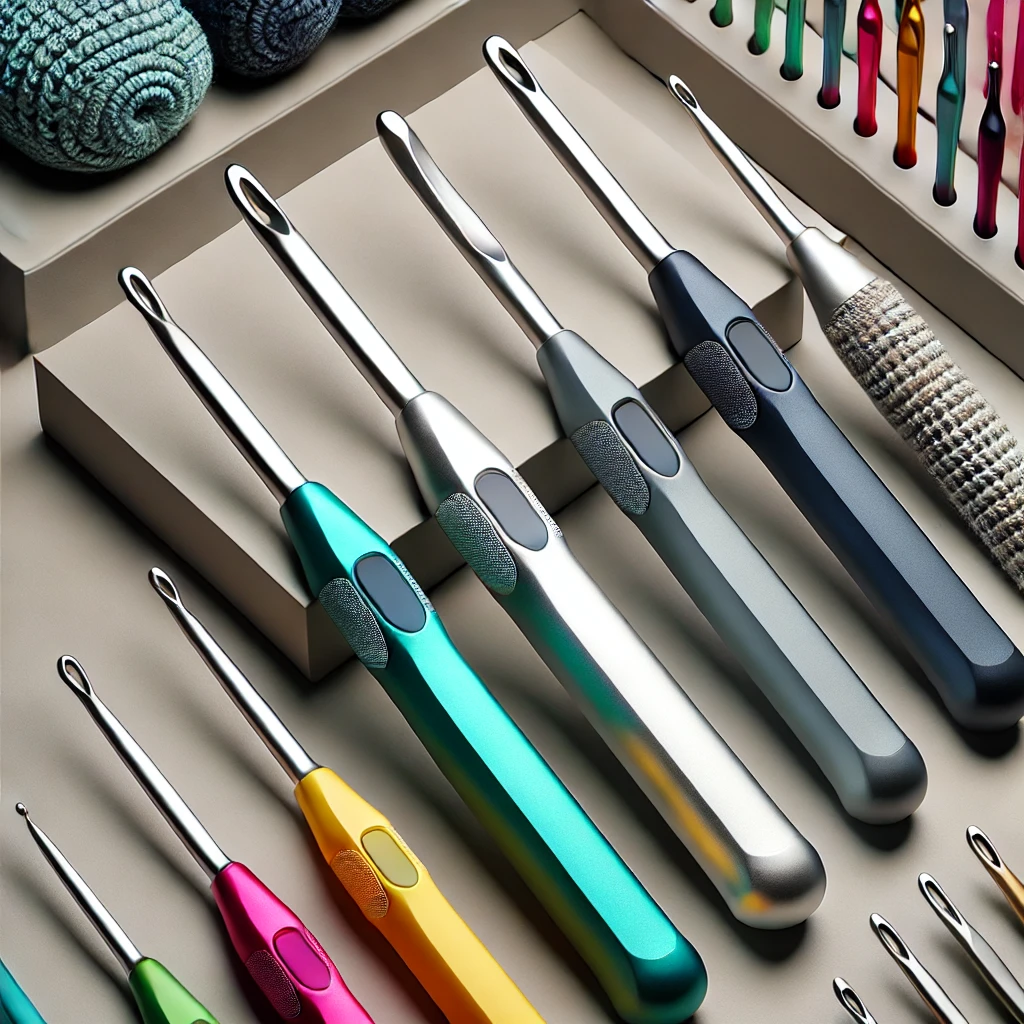
• Storage:
Store crochet hooks in a case or organizer to protect them from damage. If hooks are left loose, especially in bags, they can break, warp, or lose their smoothness. Dedicated hook organizers, rolls, or pouches work well.
• Purity
o Keep crochet hooks clean by dusting them with a cloth once in a while to remove oils from your hands and fibers of the yarn so they don’t have that too-friction feel that makes them hard to glide over stitches.
• No Dropping
Wood or plastic hooks may crack or break if dropped on the floor.
How to Buy Crochet Hooks
The following are some factors to consider to obtain the best crochet hooks that are within your budget and preferences.
1. Material
• Metal (Steel, Aluminium)
- Ideal for precision and speed
- Best for: Small hooks for lace or thread since metal offers slippery stitches and faster working
• Wood/Bamboo:
- Environmentally friendly, warm to the touch, lightweight, and has a bit of grip on the yarn (useful for beginners who require more control).
- Works best for: Hand fatigue sufferers or someone who prefers a more organic sensation.
Plastic:
- Light in weight, low cost, and is also available in larger sizes.
- Works best for: Projects using bulky yarn or a beginner who wishes to not have to pay high prices.
2. Hook Size:
Type of Project:
Use thickness of the yarn, along with the nature of your project, to determine the size of your hook.
- Fine yarn (lace, fingering) requires small hooks (for example, 1.75mm-3.25mm)
- Medium-weight yarn (worsted) needs medium hooks (for example, 5.0mm-6.5mm
- Chunky yarn requires large hooks (for example, 8.0mm+)
Gauge:
Your hook size should correlate with the gauge requirement of your pattern. Even though most patterns spell out a specified size hook, you’ll have to make a few adjustments depending on your tension.
3. Comfort and Ergonomics:
• Ergonomic Handles:
- For long periods of crocheting or for hand strain issues, use ergonomic hooks. Ergonomic hooks have a padded or molded handle that provides comfort through minimal pressure on hands and fingers.
- No Branded items for ergonomic designs are Clover, Tulip and Furls.
• Grip
Some would like to have a hook that is silky smooth for quick stitches while others would want a hooked-end for control over the yarn. Wood and bamboo have better grip while metal provides a smoothening, faster experience.
4. Brand:
• Established and Reliable Brands:
- Best quality brands such as Clover, Furls, Tulip, Boye, and Susan Bates are the established brands. Their reputation is based on durability, comfort, and size consistent-ness.
- Clover Amour Hooks and Furls Streamline are the favorites of crochet lovers due to their ergonomic and smooth design.
5. Hook Type (Inline vs. Tapered):
• Inline Hooks:
Bets by Susan Bates has an inline design; the head of the hook is in line with the shaft, creating deeper grooves. It has a tendency to give more control but slows up the crocheting speed.
• Tapered Hooks:
Tapered-type hooks, such as Boye and Clover Amour, have the head of the hook tapering inward and then outward in size; this enables the hook to catch stitches quickly.
6. Sets vs. Single Hooks:
Complete Set:
If you’re a beginner, or you need several size hooks, a set can be less expensive. Often sets come with several sizes; some even include a case or organizer.
Single Hooks:
o If you require only a specific size or have preferences, for example, material (ergonomic handle,
say), buying hooks individually makes more sense.
Where to buy Crochet Hook:
• Local Yarn Shops (LYS):
The best bet at local shops-they have a carefully curated higher quality hooks and staff who can guide you.
• Online Sellers:
Big sites like Amazon, Etsy or specialty yarn stores, such as WeCrochet or LoveCrafts offer plenty of varieties to crochet enthusiasts in all price brackets.
• Handmade/Artisan Hooks:
If you are looking for unique or personalized hooks, websites like Etsy contain independent sellers selling handmade or artist-created crochet hooks. They can be both functional and beautiful.
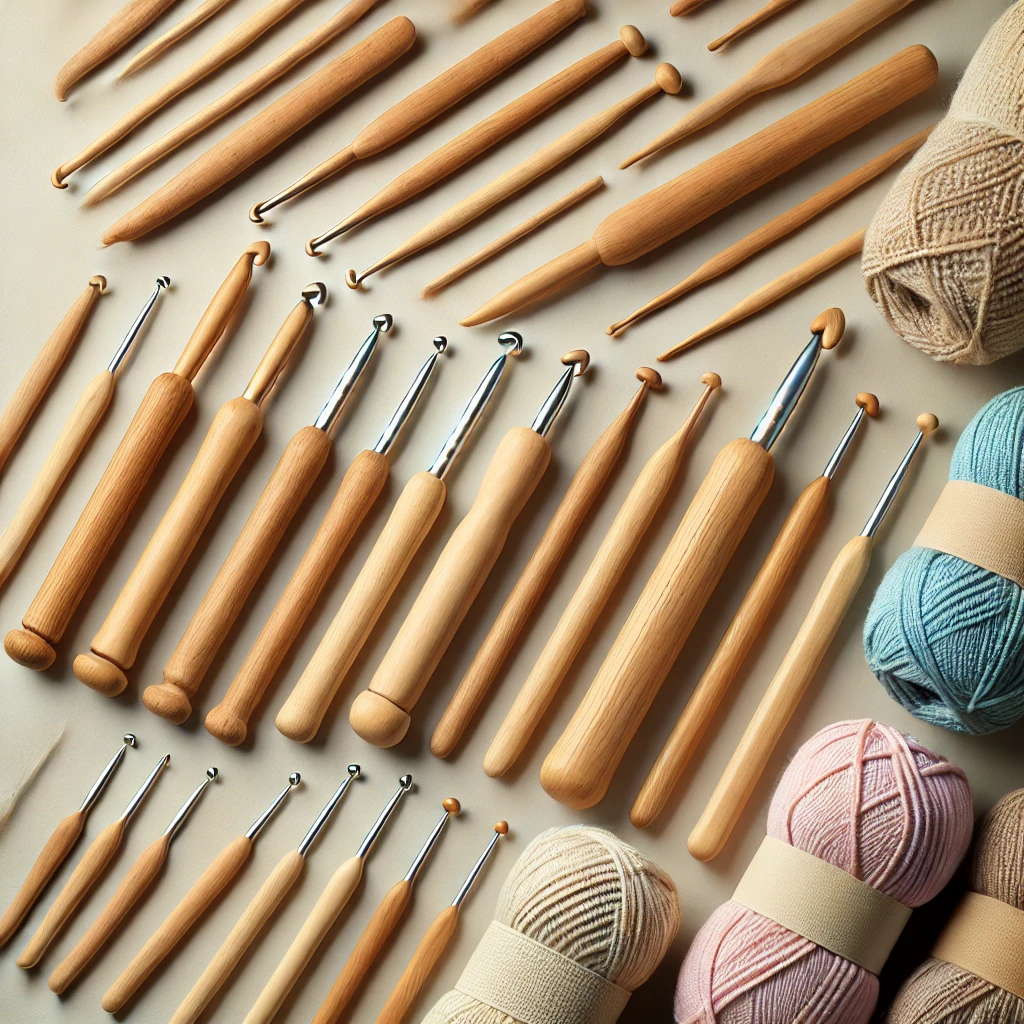
Final Shopping Instructions
• Try Hooks When Available: If you can, try out different hooks to see which one feels the most comfortable in your hand. Everyone’s grasp and hand size is different, so what I find as my favorite hook may not be the best for you.
• It really depends upon whether you are a tight or loose crocheter. If you are a tight crocheter, then you will prefer having a tapered hook and a more open throat. However, if you are looser, then you would benefit from the inline hook
•Susan Bates inline and Boye tapered are good for beginners as these are relatively cheap, easily available, and are pretty good for learning the technique of how much tension to hold on.
•Best for Comfort: Clover Amour, Furls Streamline, Tulip Etimo – These are excellent ergonomic hooks in cutting down hand strain.
• Best for Speed: Boye, Clover Amour (Tapered) – They work fast, due to the smooth design and tapered heads.
• Best for Intricate Work: Steel/Aluminum Hooks (e.g., Susan Bates) – They are perfect for detailed work, notably with smaller threads.
• Best for Eco-Conscious Crafters: Wood/Bamboo Hooks – This option is a sustainable natural choice that provides warmth and comfort.
Conclusion:
A crochet hook is more of a tool, but they become an extension of your creative process in transforming yarn into art. What’s available in terms of ergonomic design and eco-friendly materials will help determine the correct hook for your comfort, project type, and personal style. Whether you’re a very control-oriented inline hook user, a speed-skeptical tapered hook fan, or someone who loves the feeling of having handmade artisanal tools, there’s a crochet hook to fit each crafter. Learn the qualities and characteristics of various hooks, and you’ll have an elevated experience in crochet. Happy crocheting!
Interested can buy the crochet hooks using the below links
Clover Hooks https://amzn.to/4h6o3Je
Susan Bates https://amzn.to/3NpCoTG
Tulip Etimo https://amzn.to/489BKDs

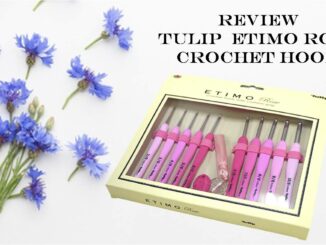
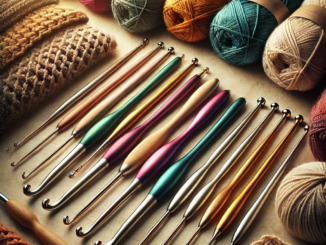
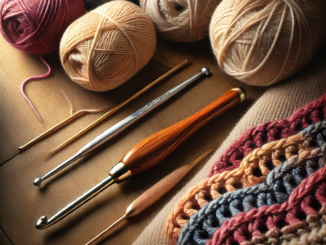
Be the first to comment